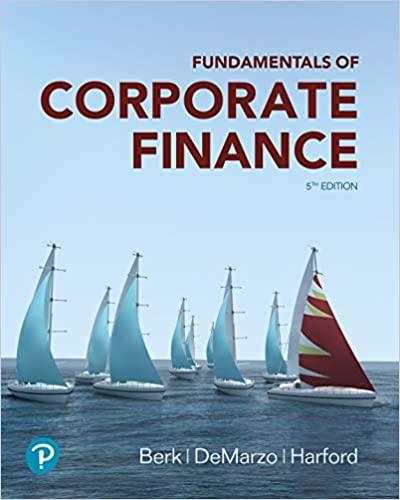Answered step by step
Verified Expert Solution
Question
1 Approved Answer
This problem draws on material from Chapters 13-15. This problem deals with the EV and the SE of the sample sum, average and percent when
This problem draws on material from Chapters 13-15. This problem deals with the EV and the SE of the sample sum, average and percent when 36 draws are made at random with replacement from the box containing 6 tickets: 0 0 2 2 2 6 The SD of the box is 2. a.What is the smallest possible the sum of the 36 draws can be? Tries 0/3 b.What is the largest possible the sum of the 36 draws can be? Tries 0/3 c.What is the EV of the sum of the 36 draws? Tries 0/5 EV and SE of the sum d.What is the SE of the sum of the 36 draws? (The SD of the box=2) Tries 0/5 e. Use the normal curve to estimate the chance that the sum of the 36 draws is greater than 60. Do it in 2 steps: First, convert 60 to a z score (by subtracting the EV and dividing by the SE.) What is the Z score for 60? Tries 0/5 Now, use the normal approximation to find the chance that the sum of the draws will be more than 60. (i.e. use the normal table to find the area to the right of the Z score you just found.) % Tries 0/3 f.What is the EV for the average of the 36 draws? (Hint-This is simple. You already computed the average of the box. Now you draw a random sample from the box. What would you expect the average of the random sample to be?) Tries 0/3 EV and the SE of the average g.What is the SE for the average of the 36 draws? (Give your answer to 3 decimal places.) Tries 0/5 h.Use the normal curve to figure the chance that the average of the draws is between 1 and 3. Do it in 2 steps: First, convert 1 and 3 to z scores. (Remember Z= (Value -EV)/SE. In this case we're talking about averages, so use EV for the average and the SE for the average.) What is the Z score for 1? Tries 0/5 What is the Z score for 3? Tries 0/5 i. Now, use the normal curve to find the chance that the average of the draws will be between those 2 z scores (Round to two decimals). % Tries 0/3 EV and the SE of the percent of "2"s in the box. j. What is the expected value for the percent of 2's drawn in 36 draws? (Hint- This is simple. The box contains 50% "2"s, so what % of your random sample would you expect to be "2"s?) % Tries 0/5 k. What is the SE of the percent of 2's drawn in 36 draws? (Round your answer to 2 decimal places.) HINT: Change to a 0-1 box % Tries 0/5 l.Use the normal curve to estimate the chance that you'd get between 40%-60% "2"'s in a random sample of 36. Do it in 2 steps: First, convert 40% and 60% to z scores. (Remember Z= (Value - EV)/SE. In this case we're talking about percents, so use EV for the percent and the SE for the percent. What is the Z score for 40%? (Round to 1 decimal place.) Tries 0/5 What is the Z score for 60%? (Round to 1 decimal place.) Tries 0/5 m.Now, find the area between those 2 Z scores on the normal curve. %
Step by Step Solution
There are 3 Steps involved in it
Step: 1

Get Instant Access to Expert-Tailored Solutions
See step-by-step solutions with expert insights and AI powered tools for academic success
Step: 2

Step: 3

Ace Your Homework with AI
Get the answers you need in no time with our AI-driven, step-by-step assistance
Get Started


